Khan’s London
This year’s London mayoral election, only the fifth time citizens of Great Britain’s capital have directly elected a mayor for the whole of the metropolis, initially promised to be the boring one. The main candidates this time were tame in comparison: Zac Goldsmith, an extremely wealthy former pupil of Eton, the elite private school, and Sadiq Khan, the son of a Pakistani immigrant bus driver who had grown up on a government housing scheme.
While the divisions between the two were obvious, it was not immediately obvious that the campaign would flare up the way it did. Goldsmith was generally considered nice-but-dim, while Khan seemed a competent but uninspiring Labour apparatchik. The issues at stake, too, were fundamentally the same that animate any major city’s politics: housing and transport.
But most Londoners could not give you a detailed description of the differences between Goldsmith and Khan’s plans for affordable accommodation or the price of an Underground journey. That’s thanks to a disastrous miscalculation by the Conservative campaign that turned the contest into one about race, religion, multiculturalism and, most importantly, how Londoners feel about their city.
The Conservative mayoral campaign was managed by a man called Mark Fullbrook of the campaigns firm Crosby Textor. Co-founder Lynton Crosby, an Australian, had delivered an unexpectedly decisive victory for the party in the 2015 general election.
The Conservative campaign, then, went straight for the supposed dark recesses of Londoners’ souls. Khan, the Conservatives claimed, was an associate of ‘extremists’, a ‘radical’ who, rather than be considered for leader of the city, should instead be seen as a threat. The intent behind labelling a practicing Muslim ‘extremist’ and ‘radical’ is obvious.
The Goldsmith campaign didn’t stop there. In an attempt to exploit sectarian divisions between London’s Asian communities, fliers were sent to families with Hindu- and Sikh-sounding names. Khan, of Pakistani origin, was no friend of India, they were told. He had not attended a rally to greet the Indian Prime Minister Narendra Modi when he visited London. His party supported a ‘wealth tax’ on family jewellery. Goldsmith, on the other hand, was always sure to celebrate Hindu festivals.
It all culminated in a disastrous op-ed piece in the Mail On Sunday newspaper, where Goldsmith threw more accusations at Khan. The article was illustrated with an iconic image of a red bus that had been blown up by a suicide bomber in the 7/7 attack on the city. This felt a smear too far for many Londoners.
Khan, meanwhile, was cannier. No one was ever allowed to forget that he had risen from humble origins. Not a day went by when he did not point out that his support for gay marriage had earned him threats from extremist Muslims. He embodied, in a way, the London version of the American dream – the city as a place where people of all backgrounds and persuasions can thrive. In a diverse city, more people probably had friends like the fairly normal-seeming Khan than Goldsmith, a bona-fide member of the international jet set. Goldsmith didn’t know what stadiums soccer teams played at, the sequence of stops on an underground line, or even how to drink a pint of beer properly. In the end, even Goldsmith’s party turned against his campaign strategy.
Londoners will bask in this weekend’s sunshine, reassured that after Khan’s victory, the city’s multicultural nature will be safeguarded. The great mix of people is what the metropolis is for, after all. London is constantly reassuring itself that it is the greatest city in the world.
The election of a left-leaning Muslim mayor is something we’ll hold up as proof of our cosmopolitan brilliance for days to come. Meanwhile, the Conservatives will have to deal with the legacy of a campaign that was not just low, but incompetent.
This article has been excerpted from: ‘How London’s Sadiq Khan triumphed over race-baiting’.
Courtesy: Commondreams.org
-
 Defying Age At Milano Cortina Games: Canadian Skater Stellato-Dudeke Aims For Gold At 42
Defying Age At Milano Cortina Games: Canadian Skater Stellato-Dudeke Aims For Gold At 42 -
 Study Finds Screen Time Does Not Harm Teenagers’ Mental Health
Study Finds Screen Time Does Not Harm Teenagers’ Mental Health -
 'Dunesday': What Robert Downey Jr. And Timothee Chalamet Really Think
'Dunesday': What Robert Downey Jr. And Timothee Chalamet Really Think -
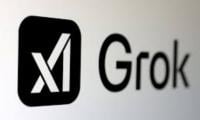 UK Regulator Reaffirms Ongoing Investigation Into X Deepfake Probe
UK Regulator Reaffirms Ongoing Investigation Into X Deepfake Probe -
 'Marty Supreme' Featured Secret Robert Pattinson Cameo?
'Marty Supreme' Featured Secret Robert Pattinson Cameo? -
 ‘Operation Arctic Endurance’: Which NATO Nations Are Sending Troops To Greenland?
‘Operation Arctic Endurance’: Which NATO Nations Are Sending Troops To Greenland? -
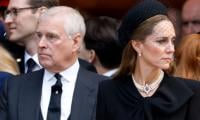 Kate Middleton ‘disgusted’ As Andrew Points Finger At Her Over Royal Downfall
Kate Middleton ‘disgusted’ As Andrew Points Finger At Her Over Royal Downfall -
 YouTube Adds New Parental Controls For Teens, Limits Shorts Scrolling
YouTube Adds New Parental Controls For Teens, Limits Shorts Scrolling -
 Sarah Ferguson Takes Big Decision As Royal Lodge Eviction Looms
Sarah Ferguson Takes Big Decision As Royal Lodge Eviction Looms -
 Bruno Mars Leaves Taylor Swift Behind With Shocking Move
Bruno Mars Leaves Taylor Swift Behind With Shocking Move -
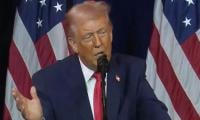 Trump Administration Imposes 25% Tariff On Imports Of Some AI Chips
Trump Administration Imposes 25% Tariff On Imports Of Some AI Chips -
 Chinese Smartphone Makers Adjust Prices As Costs Go Up
Chinese Smartphone Makers Adjust Prices As Costs Go Up -
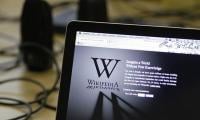 Wikipedia Owner Signs AI Content Training Deals With Microsoft, Meta
Wikipedia Owner Signs AI Content Training Deals With Microsoft, Meta -
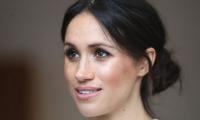 Meghan Markle’s Real Feelings Revealed Amid UK Return Rumours
Meghan Markle’s Real Feelings Revealed Amid UK Return Rumours -
 Reese Witherspoon Issues Urgent Warning After Scammers Using Her Identity
Reese Witherspoon Issues Urgent Warning After Scammers Using Her Identity -
 XAI Restricts Grok Image Editing After Backlash From California And Europe
XAI Restricts Grok Image Editing After Backlash From California And Europe



